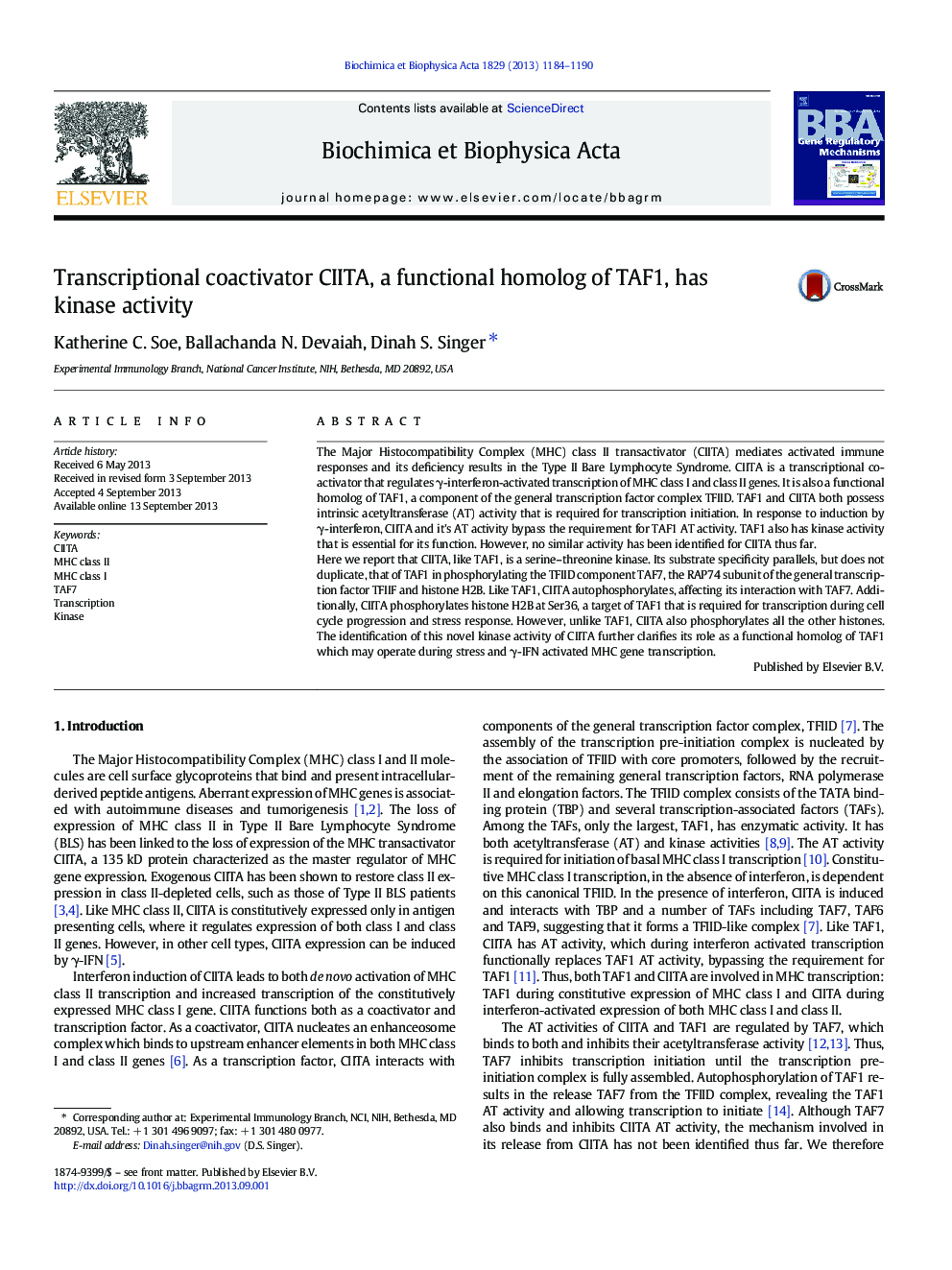| Article ID | Journal | Published Year | Pages | File Type |
|---|---|---|---|---|
| 1946479 | Biochimica et Biophysica Acta (BBA) - Gene Regulatory Mechanisms | 2013 | 7 Pages |
•CIITA, the coactivator of MHC transcription, has TAF1-like kinase activity.•CIITA is a functional homolog of TFIID component TAF1, but has distinct specificity.•CIITA kinase activity, like TAF1, regulates its interaction with TAF7.•CIITA also phosphorylates histone H2B at Ser36.•CIITA kinase activity may replace TAF1 during γ-interferon activated transcription.
The Major Histocompatibility Complex (MHC) class II transactivator (CIITA) mediates activated immune responses and its deficiency results in the Type II Bare Lymphocyte Syndrome. CIITA is a transcriptional co-activator that regulates γ-interferon-activated transcription of MHC class I and class II genes. It is also a functional homolog of TAF1, a component of the general transcription factor complex TFIID. TAF1 and CIITA both possess intrinsic acetyltransferase (AT) activity that is required for transcription initiation. In response to induction by γ-interferon, CIITA and it's AT activity bypass the requirement for TAF1 AT activity. TAF1 also has kinase activity that is essential for its function. However, no similar activity has been identified for CIITA thus far.Here we report that CIITA, like TAF1, is a serine–threonine kinase. Its substrate specificity parallels, but does not duplicate, that of TAF1 in phosphorylating the TFIID component TAF7, the RAP74 subunit of the general transcription factor TFIIF and histone H2B. Like TAF1, CIITA autophosphorylates, affecting its interaction with TAF7. Additionally, CIITA phosphorylates histone H2B at Ser36, a target of TAF1 that is required for transcription during cell cycle progression and stress response. However, unlike TAF1, CIITA also phosphorylates all the other histones. The identification of this novel kinase activity of CIITA further clarifies its role as a functional homolog of TAF1 which may operate during stress and γ-IFN activated MHC gene transcription.
